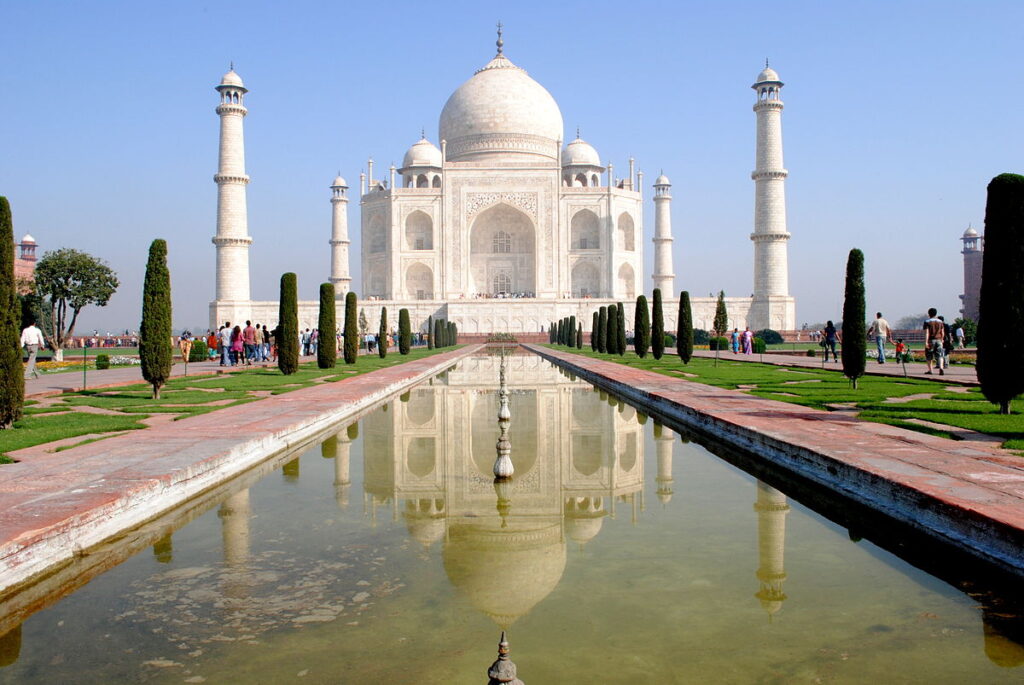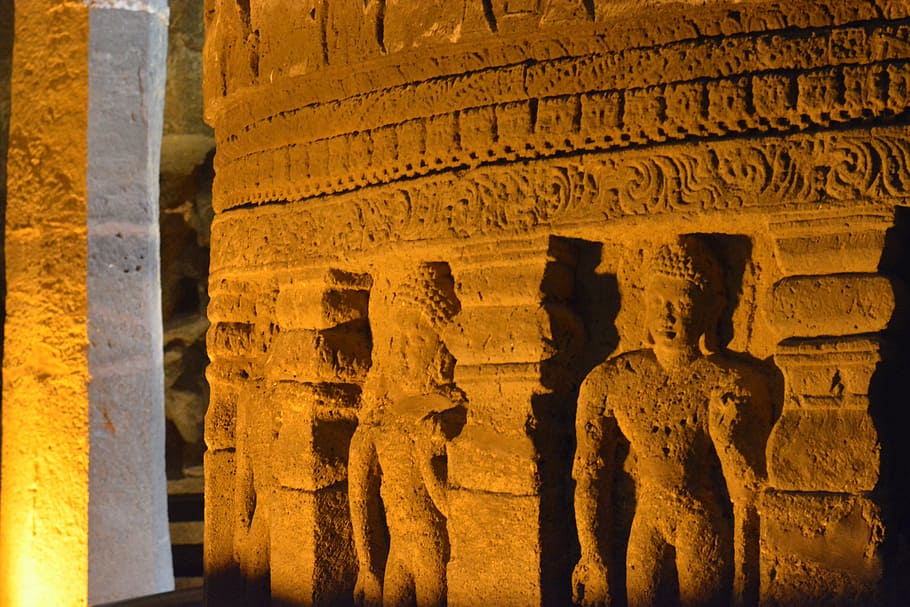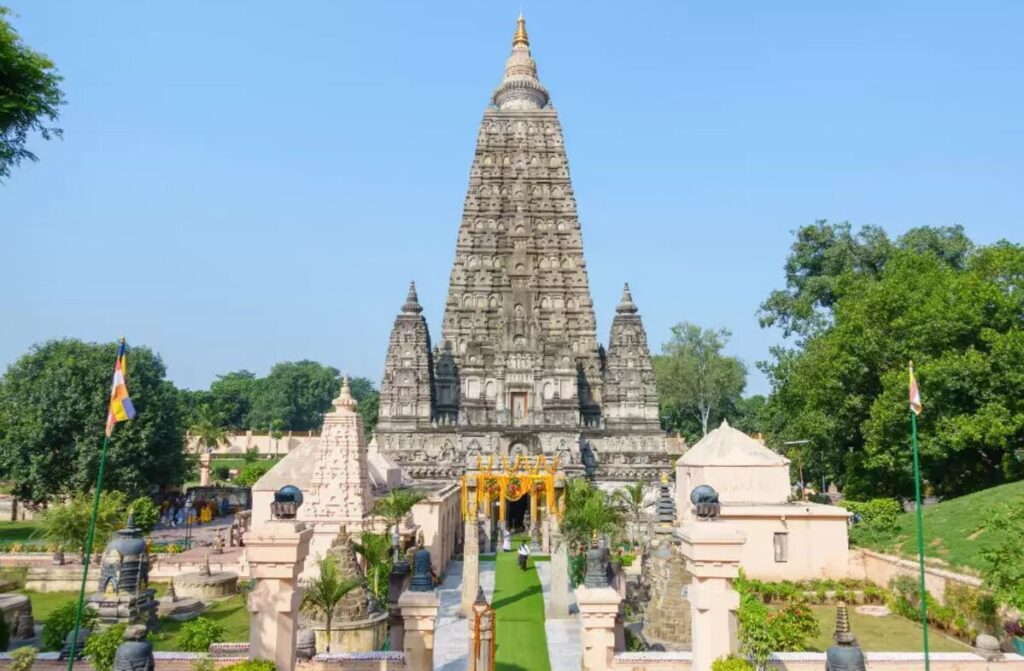Exploring the rich cultural tapestry of India becomes a journey of wonderment as we delve into 9 unique World Heritage Sites. These exceptional destinations offer a glimpse into the nation’s history, art, and architecture, captivating the senses and leaving an indelible mark on every traveler’s heart.
1. Taj Mahal: The Epitome of Love
The Taj Mahal, a monument of unparalleled beauty, stands as an eternal symbol of love. Commissioned by Mughal Emperor Shah Jahan in memory of his beloved wife Mumtaz Mahal, this white marble mausoleum is a masterpiece of architecture.
Its intricate carvings, symmetrical gardens, and the shimmering Yamuna River backdrop create an ethereal ambiance that’s nothing short of breathtaking.
2. Qutub Minar: A Towering Marvel
Standing tall in Delhi, the Qutub Minar is the world’s tallest brick minaret. Built in the 12th century, its intricate design and inscriptions showcase a blend of Indo-Islamic architecture.
The adjacent Qutub Complex houses other historical structures, making it a window into India’s medieval history.
3. Khajuraho Group of Monuments: Temples of Passion
The Khajuraho temples in Madhya Pradesh are renowned for their stunning sculptures depicting various aspects of life. These temples, built between the 9th and 12th centuries, showcase intricate carvings that celebrate human emotions, love, and devotion.
The artistic brilliance of these monuments has earned them a place on the global stage.
Also Read: 11 best Indian Cities that Exude European Vibes
4. Ellora Caves: A Rock-Cut Wonder
The Ellora Caves in Maharashtra are a testament to India’s rock-cut architecture. These 34 caves, chiseled out of solid rock, house Buddhist, Hindu, and Jain temples.
The Kailasa Temple, carved from a single rock, is a marvel that reflects the ingenuity of ancient Indian craftsmen.
5. Ajanta Caves: Ancient Murals Unveiled
The Ajanta Caves, also in Maharashtra, are renowned for their exquisite murals. Dating back to the 2nd century BCE, these caves depict scenes from the life of Buddha and offer insights into the artistic and cultural heritage of ancient India.
6. Red Fort: A Symbol of Power
The Red Fort in Delhi is an architectural masterpiece that served as the main residence of Mughal emperors for centuries. Its red sandstone walls and imposing gateways are a testament to Mughal grandeur and India’s history.
7. Hampi: The Forgotten Kingdom
The ruins of Hampi in Karnataka transport visitors to the Vijayanagara Empire’s golden era. The vast boulder-strewn landscape is dotted with temples, markets, and monuments that once thrived as a vibrant capital.
Also Read: 10 South Indian Hill Towns You’d Definitely Fall in Love
8. Mahabodhi Temple Complex: Enlightenment’s Abode
Located in Bodh Gaya, Bihar, this temple marks the spot where Siddhartha Gautama attained enlightenment and became the Buddha.
The complex’s tranquil ambiance and sacred significance draw pilgrims and visitors from around the world.
9. Chhatrapati Shivaji Terminus: Victorian Gothic Splendor
Formerly known as Victoria Terminus, this railway station in Mumbai is an architectural marvel that fuses Victorian and Indian styles.
Its intricate detailing and historical significance make it a unique addition to India’s World Heritage Sites.
FAQs
Q: Can I enter the Taj Mahal complex at any time of the day?
A: The Taj Mahal is open from sunrise to sunset, except on Fridays when it is closed for prayers.
Q: Are there guided tours available at the Qutub Minar?
A: Yes, guided tours are available at the Qutub Minar complex, which provide insights into its history and architecture.
Q: How can I reach the Khajuraho Group of Monuments?
A: Khajuraho has its own airport, and it’s well-connected by road and rail to major Indian cities.
Q: Can visitors explore the interiors of the Kailasa Temple at Ellora Caves?
A: No, visitors are not allowed inside the Kailasa Temple for preservation purposes, but you can admire its exterior.
Q: Is photography allowed inside the Ajanta Caves?
A: Yes, photography is allowed inside the Ajanta Caves, but without the use of flash.
Q: What’s the best time to visit Hampi?
A: The best time to visit Hampi is from October to February when the weather is pleasant.
Conclusion
India’s World Heritage Sites are not just historical monuments; they are living testaments to the country’s diverse cultural heritage. From ancient temples to architectural marvels, each site tells a story of India’s past, enriching our understanding of its intricate tapestry. As you embark on a journey to these 9 unique sites, prepare to be mesmerized by the echoes of history and the splendor of human creativity.
Hope you liked this article on 9 Unique World Heritage Sites in India. Do share your views with me within the comments section below. If this article was helpful, do share this post with your friends on Facebook and Twitter. It would mean a lot.
Hey there! I’m Santu Chakraborty and I’m not your typical traveler. By day, I wrangle circuits and solve electrical mysteries as an engineer, but my true passion lies in exploring the world and sharing those experiences with you. For the past five years, this blog has been my canvas, where I paint stories of adventure, practical travel tips, and cultural insights to ignite your wanderlust. So, come join me on my journeys and discover the magic that awaits just beyond the horizon!














